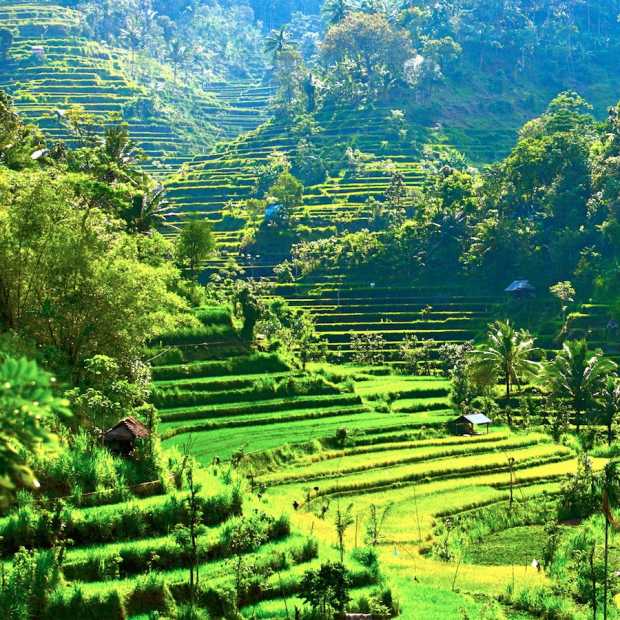Not a member yet? Sign Up!
Info
Please use real email address to activate your registration

On our last trip to Bali, we squeezed enough time to see Subak, listed by UNESCO as a world heritage site that belongs to all the peoples of the world, irrespective of the territory on which it is located.
Subak is a traditional irrigation system that has been in practice since the 9th century. In essence it is a prime manifestation of the Tri Hita Karana, the Balinese philosophy of life that brings together the realms of living in harmony with the creator, with other human beings, and with nature.

Wayan Windia, a Professor at the Faculty of Agriculture of Udayana University in Bali simplified subak as an autonomous organization in which farmers manage water collectively in a certain territory where there exists a temple and a source of irrigation water.
Rice terraces
It was raining when we began the subak trip from Denpasar, but 45 minutes later upon arriving in Tegalalang, a location between Kintamani and Ubud, the sun came up and we were greeted by a beautiful view of rice terraces.

This striking panorama where coconut trees encircled the green terraces on hilly sides is only a part of subak. We can find rice terraces in many parts of Southeast Asia and China but what is unique in Bali is the implementation of the subak system that, according to Hafied Gany has a principle that has been applied consistently through the Tri Hita Karana:
(a) spiritual based ritual activities on religious ceremonies from land preparation until harvesting and post harvesting;
(b) consistent application of mutual assistance in organizational activities guided by traditional regulation (awig-awig); and
(c) irrigation water distribution by utilizing proportional structural concept, where it also includes a system of reciprocal exchange of water right.
Subak practices
As evaluated by UNESCO, the subak system of democratic and egalitarian farming practices has enabled the Balinese to become the most prolific rice growers in the archipelago despite the challenge of supporting a dense population.

The subak components are the forests that protect the water supply, terraced paddy landscape, rice fields connected by a system of canals, tunnels and weirs, villages, and temples of varying size and importance that mark either the source of water or its passage through the temple on its way downhill to irrigate subak land.
In the open course ware of Udayana University, Wayan Windia detailed the tasks that have to be adhered to in a subak system:
First, manage and to proportionally distribute irrigation water to farmers as subak members. When the irrigation water is diminishing, subak allows farmers to borrow water among farmers, among sub-subaks, or among subaks system in one river.
Second, pool resources, most often through post harvest contribution to be used for canal renovation, temple ceremonies and other activities.
Third, maintain the irrigation canal, including checking and cleaning the canal tributaries.
Fourth, resolve conflicts of water distribution and punish those who violate the traditional regulation either in monetary or temple sanction.
Fifth, conduct ritual ceremonies in stages such as when land is being prepared, when subak begins receiving water from the dam, and when it is harvesting time. Farmers can arrange for small or big ceremonies depending on their financial situation.

Sustaining the landscape
UNESCO has proved that the authenticity of the terraced landscapes, forests, water management structures, temples and shrines in terms of the way they convey Outstanding Universal Value and reflect the subak system is clear.
Bali currently has about 1,200 water collectives and between 50 and 400 farmers manage the water supply from one source of water.
To sustain the living landscape ways will need to be found to provide more resources to support the traditional systems and to provide benefits that will allow farmers to stay on the land. The protection of the setting of the landscapes will also be essential in order to protect the source of water that underpins the subak system.
On our way back to Denpasar from the subak trip we learned that UNESCO, as a non-profit organization, has made it possible for individuals to help preserve world heritage sites. Visit this page to join UNESCO in protecting and conserving our World Heritage including the millennia-old subak.
-------------------------------
Images: Omar Niode Foundation, Google Map and Dudarev Mikhail, szefei, Agnus Febriyant/ Shutterstock